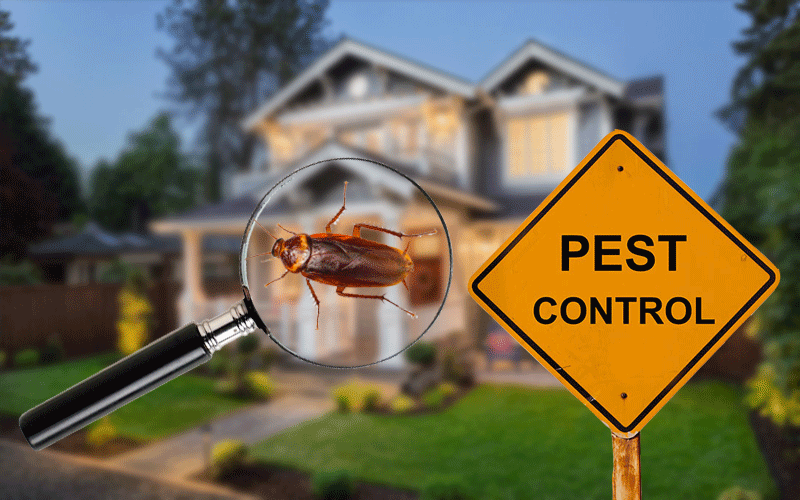Bed Insect Treatment Malfunction: Comparing Chemical Vs. Non-Chemical Solutions
In the realm of bug control, particularly when dealing with the relentless issue of bed insects, the option in between chemical and non-chemical treatment options can be a crucial one. Both strategies provide distinctive advantages and disadvantages, influencing variables such as effectiveness, security factors to consider, and total expense. By analyzing the nuanced information of each approach, a more clear understanding of which path to go after in addressing a bed pest infestation can be acquired.
Effectiveness of Chemical Therapies
Chemical treatments for bed insect infestations have been widely identified for their potent and quick effectiveness in getting rid of these pests. When thinking about the performance of chemical therapies, it is critical to recognize that they can give a quick and complete solution to a bed insect trouble. Professional pest control operators often depend on insecticides to target bed bugs at different stages of their life cycle, consisting of eggs, nymphs, and adults. These chemicals usually work by interrupting the bed pests' worried system, bring about paralysis and eventual fatality.
In addition, chemical treatments have the benefit of supplying residual impacts, suggesting that they can continue to get rid of bed bugs even after the preliminary application. This residual action is particularly advantageous in combating any type of prospective re-infestations. Furthermore, the rapid activity of chemical therapies can bring alleviation to people facing extreme bed pest problems, allowing them to restore control of their living spaces promptly.
Safety And Security Interest In Chemical Solutions
One important element that needs mindful factor to consider when making use of chemical options for bed bug therapy is ensuring the safety and security of passengers and the environment. Direct exposure to certain chemicals utilized in bed bug therapies can lead to respiratory issues, skin inflammation, or various other unfavorable responses, particularly in people with pre-existing problems or level of sensitivities.
In addition, the ecological influence of chemical services is one more significant factor to consider. Some chemicals utilized in bed bug treatments may be harmful to beneficial pests, wild animals, and ecological communities if they leach into the dirt or water supply. It is important to use chemical treatments judiciously, following safety standards, and thinking about much less toxic choices to alleviate these dangers and guarantee the reliable and risk-free administration of bed bug infestations.
Benefits of Non-Chemical Techniques
Thinking about the possible safety and security problems and ecological impact associated with chemical solutions for bed bug therapy, discovering non-chemical strategies presents an appealing choice with several unique benefits. Non-chemical therapies are eco friendly, as they do not add to air or water contamination, making them a lasting choice for parasite control.
Additionally, non-chemical services can be efficient in targeting bed bugs, what is pest control including hard-to-reach locations where chemical treatments might not penetrate - A1 charlotte bed bug exterminator. Methods such as heat therapy, vacuuming, steam cleansing, and mattress encasements give comprehensive obliteration without the usage of dangerous chemicals.
Limitations of Non-Chemical Treatments

Furthermore, non-chemical therapies typically need numerous applications to achieve effective elimination. This can be taxing and may not always ensure full removal of all bed pests and their eggs, particularly in hidden or hard-to-reach places.
Furthermore, the success of non-chemical therapies heavily relies on correct implementation and thoroughness, which can be challenging for people without expert expertise. Inadequate application of non-chemical methods may cause incomplete elimination, resulting in persistent problems and the demand for extra treatments.
Therefore, while non-chemical treatments have their benefits, it is crucial to acknowledge these constraints and consider them when figuring out the mice infestation most reliable technique for managing bed insect problems.
Expense Contrast: Chemical Vs. Non-Chemical Options
Provided the limitations connected with non-chemical treatments, an essential element to examine in the context of bed pest monitoring is the cost contrast between chemical and non-chemical alternatives. In comparison, non-chemical treatments like warmth therapy or vapor can be extra pricey, with prices ranging from $1,000 to $6,000 for an entire home. While the preliminary price of chemical therapies might appear lower, several therapies may be called for to fully get rid of the infestation, possibly increasing the overall expense.
Verdict

Taking into consideration the prospective safety and security problems and environmental influence linked with chemical options for bed pest treatment, checking out non-chemical strategies provides an appealing option with a number of distinct advantages.Offered the constraints associated with non-chemical treatments, an essential element to assess in the context of bed insect monitoring is the expense comparison between chemical and non-chemical choices. In comparison, non-chemical therapies like heat therapy or vapor can be extra costly, with expenses varying from $1,000 to $6,000 for a whole home. While the first price of chemical treatments may seem lower, numerous treatments might be needed to completely eliminate the infestation, possibly enhancing the general price.In conclusion, when contrasting chemical and non-chemical bed pest therapy alternatives, it is crucial to consider effectiveness, security, advantages, restrictions, and expense.
Comments on “Professional A1 Charlotte Bed Bug Exterminator - High Quality Service Assured”